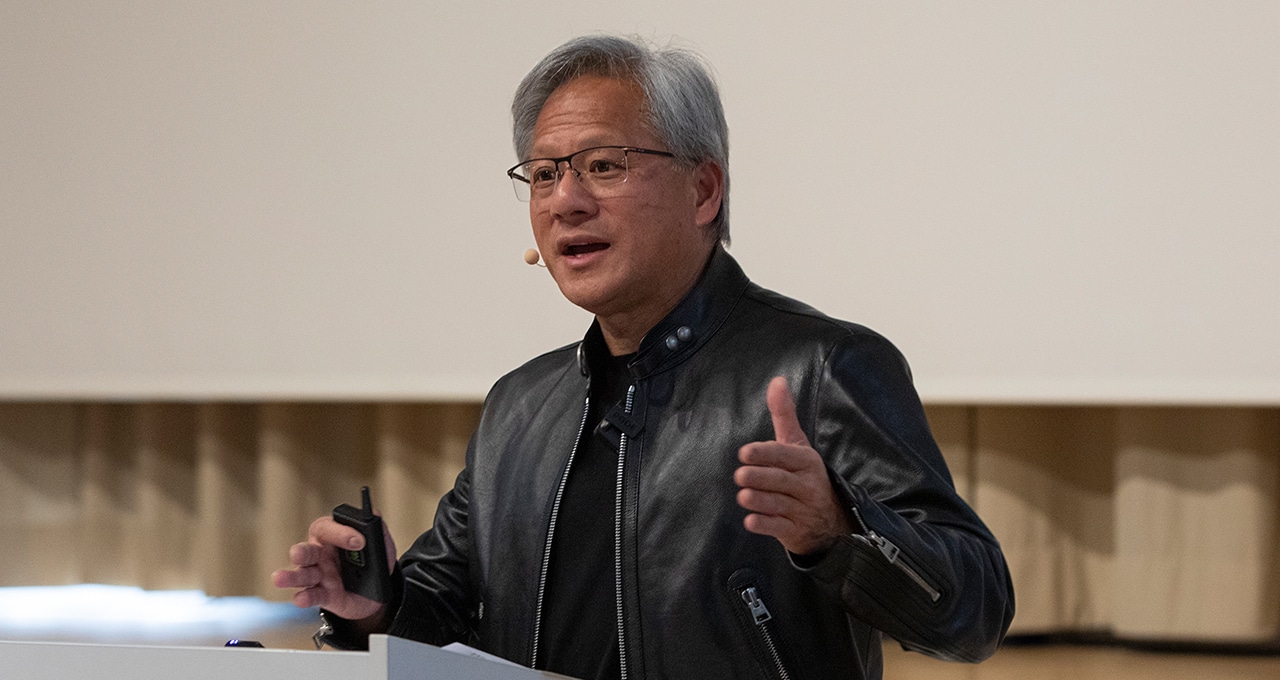AI and accelerated computing will enable breakthroughs in climate science, NVIDIA founder and CEO Jensen Huang said during a keynote Monday at the Berlin Summit for the Earth Virtualization Engines initiative.
“Richard Feynman once said that ‘what I can’t create, I don’t understand,’ and that’s the reason why climate modeling is so important,” Huang told 180 attendees at the Harnack House in Berlin, a storied gathering place for the region’s scientific and research community.
“And so the work that you do is vitally important to policymakers, researchers, and the industry,” he added.
To advance this work, the Berlin Summit brings together scientists and technologists from around the globe to harness AI and high-performance computing to create climate information systems of the future.
In his talk, Huang outlined three miracles that will have to happen for attendees of the Berlin Summit to achieve their goal of creating Earth Virtualization Engines (EVE). He also described NVIDIA’s efforts in this direction through Earth-2, a highly collaborative effort with the climate science community to create Earth digital twins.
The first miracle required will be to simulate the climate fast enough and with a high enough resolution– at kilometer-scale– to predict impacts at local granularity.
The second miracle required will be to emulate the physics of climate at high enough fidelity using AI. Generative AI breakthroughs promise new ways of predicting Earth’s climate and enabling real-time interactivity with petabytes of climate data. More importantly, AI is the technology that will help create actionable climate information from raw climate data in myriad ways, unlocking the potential of vast quantities of data to inform decision-making.
The third miracle needed is the ability to virtualize massive data interactively with NVIDIA Omniverse to “put it in the hands of policymakers, businesses, companies, and scientists.”
The Next Wave of Climate and Weather Innovation
EVE is an international collaboration that brings together digital infrastructure focused on climate science, HPC and AI aiming to provide, for the first time, easily accessible kilometer-scale climate information to manage the planet sustainably.
“The reason why Earth-2 and EVE found each other at the perfect time is because the premise of Earth-2 is also based on these three miracles”, Huang said.
The EVE initiative promises to accelerate the pace of advances, advocating coordinated climate projections at kilometer-scale resolution. It’s an enormous challenge, but it builds on a huge base of advancements over the past 25 years.
A sprawling suite of applications already benefits from accelerated computing– including ICON, IFS, NEMO, MPAS, WRF-G– and much more computing power for such applications is coming.
The NVIDIA GH200 Grace Hopper Superchip is a breakthrough accelerated CPU designed from the ground up for giant-scale AI and high-performance computing applications. It delivers up to 10x higher performance for applications running terabytes of data.
It’s built to scale, and by connecting large numbers of these chips together, NVIDIA can offer systems with the power efficiency to accelerate climate research. “To the software, it looks like one giant processor,” Huang said.
To help researchers put vast quantities of data to work quickly to unlock understanding, Huang spoke about NVIDIA Modulus, an open-source framework for designing, training and fine-tuning physics-informed machine learning models, and FourCastNet, an Earth system emulator and predictor that can learn physics from real-world data.
Using data alone, Huang showed how FourCastNet can learn the physical principles governing complex weather patterns and accurately predict the thermodynamic structure of storms.
A novel application of AI emulators is to tether them to principled physics-based simulations to achieve two goals: rapid exploration and massive compression. FourCastNet can generate many possible weather trajectories when tethered to “checkpoints” created by a climate simulation in seconds to minutes.
This enables rapid interactive exploration of massive ensembles of possible trajectories at high fidelity and provides massive data compression. The longer the distance between checkpoints, the larger the compression achieved.
FourCastNet today can tether between checkpoints spaced a month apart, achieving 700x data compression. Huang demonstrated FourCastNet tethering for cities across the globe, including Berlin, Tokyo and Buenos Aires.
Huang then demonstrated how FourCastNet-generated large ensembles anticipated an unprecedented North African heatwave from 2018. By running FourCastNet in Modulus, the Earth-2 team could generate a thousand different 21-day weather trajectories in one-tenth the time it previously took to do a single trajectory — and with 1,000x less energy consumption. Such massive ensembles are required to quantify the risk of rare, high-impact extreme weather events.
Lastly, NVIDIA technologies promise to help all this data and knowledge become more accessible, interactive, and useful with digital twins of increasingly complex systems – from Amazon warehouses to the way 5G signals propagate in dense urban environments.
Huang then showed a stunning, high-resolution interactive visualization of global-scale climate data in the cloud, zooming in from a view of the globe to a street-level detailed view of Berlin. This approach can enable interactive exploration of climate information across the globe, Huang said.
Earth: The Final Frontier
To make the three miracles outlined above a reality, Huang showed how NVIDIA is building more powerful computing systems for simulating physical systems at ultra-high resolution, training large-scale AI models, and interactive visualization of petabytes of data.
“These new types of supercomputers are just coming online,” Huang said. “This is as fresh a computing technology as you can imagine.”
Huang ended his talk by thanking the world-leading scientists who congregated at the Berlin Summit and playfully suggesting a mission statement for EVE.
“Earth, the final frontier, these are the voyages of EVE,” Huang said. “Its mission is to push the limits of computing in service of climate modeling, to seek out new methods and technologies to study the global-to-local state of the climate to inform today the impact of mitigation and adaptation to Earth’s tomorrow, to boldly go where no one has gone before.”
Learn more about Earth-2.
Discover how AI is powering the future of clean energy.
